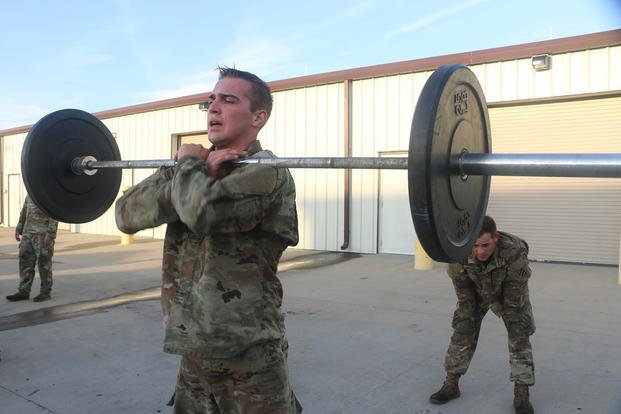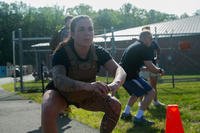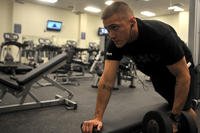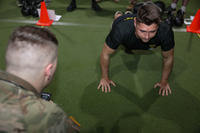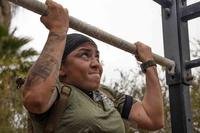Hey Stew,
I have been reading your articles for years at both your site and Military.com. Thanks for your ideas. They have really helped me with my preparation for the Army. I have kind of a hypothetical question for you. I am curious that if you had only five exercises to do in a day, what would they be and how would you break them up into a weekly workout? Just curious.
-- Jim D.
Jim D.,
Thanks and great question. If I had to choose between five exercises of any type, I think I would go with an arrangement that truly works every part of my body. I would break this into a push, pull, full body, legs and core exercise list, or a combination of two or more.
So I would select the following:
Push and Core -- TRX Atomic Push-ups
The bench press is a great lift, but after a good decade now of adding in suspension training into my program, I had to give the chest, shoulders, triceps and core exercise to the TRX push-up. The TRX makes the push-up twice as hard, and the added knee up between push-up repetitions completes this hardcore core exercise.
Pull -- Pull-ups
The heavy weight exercise of the calisthenics world is the pull-up. If you can master this exercise, you will build the needed strength for pulling your body weight over walls and up ropes.
This is a great exercise for your grip, biceps and upper back. Keeping an ability to do 20+ pull-ups in one set and 100 reps in a single workout has always been a goal of my workouts. Grip variations make this exercise near endless as you can go wide, close, alternating, use a rope and a reverse grip, to name some variations.
Full -- Deadlift
Lifting things properly is about as functional as you can get. Practicing this exercise regularly will ensure your ability to lift and carry equipment and gear when needed. This also works the grip, legs, glutes and lower back and works them in motion under strain. Plus, it is fun to get into heavy lifting mode during certain cycles of the year with this exercise. See the lightweight version of the deadlift.
Legs and Core -- Front Squat
For a true leg workout, I find the front squat more useful than the back squat. It has versatility in helping to improve other lifts, such as the hang clean, power clean, etc. You might not be able to do as much weight as the back squat, but if moderately heavy lifting is your thing, this will work. Variations include overhead squats for more shoulder girdle and core addition.
Core -- Plank
For the king of the isometric exercises, go with the plank. This is a great exercise that works the entire core (not just abs). You will challenge the shoulder girdle, spinal muscles, hips and legs with this exercise. Build up to five minutes or more with dozens of variations. You can check out a few variations.
Limiting any routine to five exercises is not very realistic, but looking at this question, I would have to say these are my favorites. Here is how I would arrange these mixed with cardio days:
|
Mon./Thurs. |
Tues./Fri. |
Wed. |
Sat. |
|
Upper body Pull-push/core -- Pyramid PT Followed by cardio of running or swimming |
Lower/Full-body exercises: 5 x 5 Front squats Deadlifts Followed by ruck or swim with fins |
Sprints/agility Cardio (shuttle runs/300-400-meter sprints plus: Running goal pace -- focusing on mile pace workouts Swim or bike cooldown |
Max-rep PT: 100 pull-ups 200 TRX push 300 seconds of plank pose Cardio Run two miles, ruck two miles, swim 1,000 meters with fins |
There are many ways to arrange these five exercises. Another common way would be to do all of them every other day instead of the split routine above. Make the days in between a variety of cardio options from speed and agility days, goal mile pace running, swimming, swimming with fins or non-impact cardio options, such as rowing, biking, elliptical training.
Stew Smith is a former Navy SEAL and fitness author certified as a Strength and Conditioning Specialist (CSCS) with the National Strength and Conditioning Association. Visit his Fitness eBook store if you're looking to start a workout program to create a healthy lifestyle. Send your fitness questions to stew@stewsmith.com.
Want to Learn More About Military Life?
Whether you're thinking of joining the military, looking for fitness and basic training tips, or keeping up with military life and benefits, Military.com has you covered. Subscribe to Military.com to have military news, updates and resources delivered directly to your inbox.
